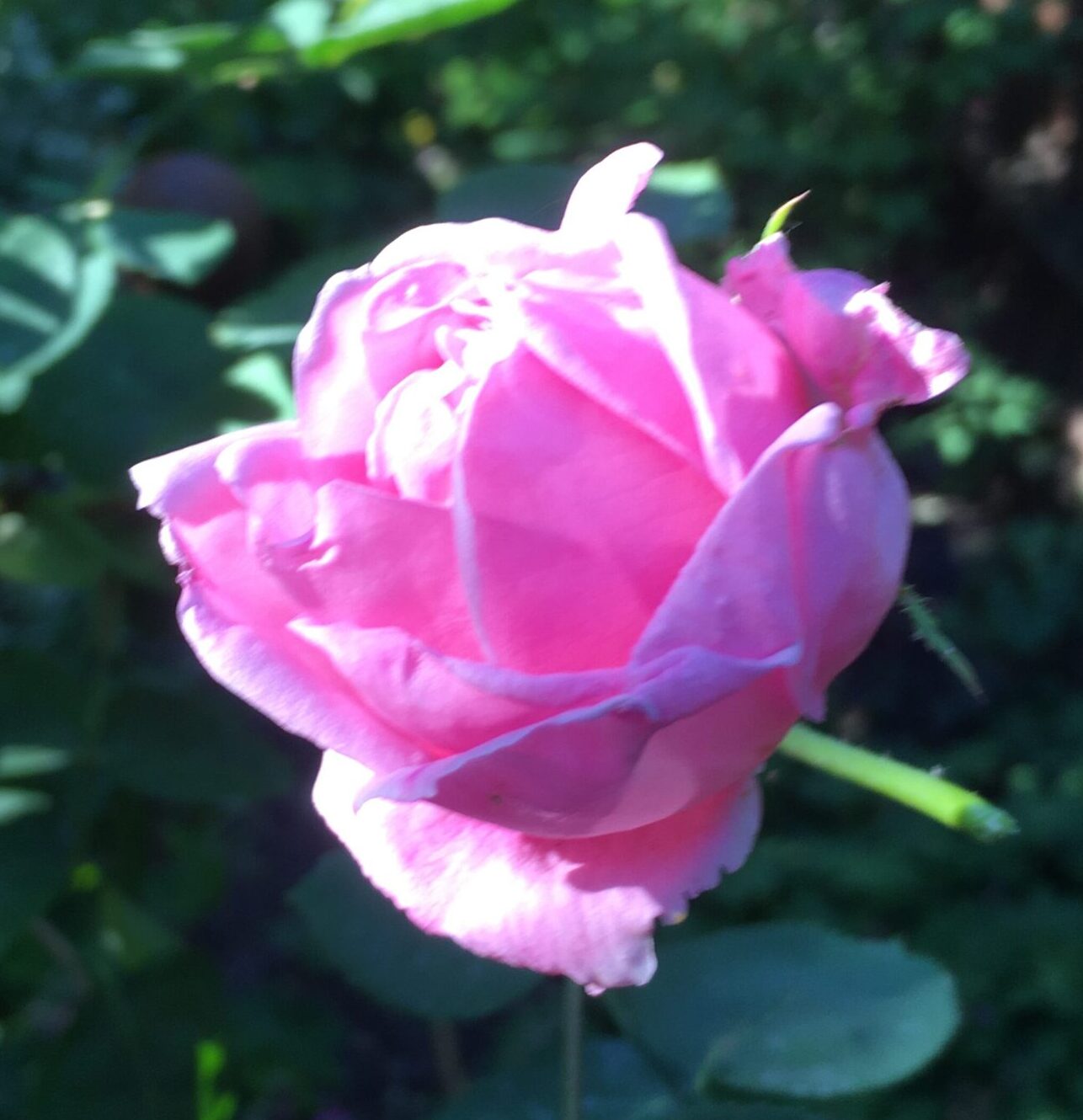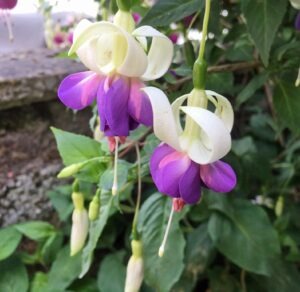Many years ago – before I had got into this gardening lark – I used to look at large-flowering fuchsias and think that no way could such lovely, often delicate-looking plants survive a British winter or the shade in my garden.
How wrong can you be?


Fuchsia ‘Bella rosella’. A large flowered variety that is ideal for garden borders and containers. As it produces long trailing stems, it is idea for hanging baskets.
There are wonderful, hardy fuchsias of all shapes and sizes (see the pictures of the ones that grow happily in my shady garden and on north-facing windowsills), and they all seem to prefer partial shade to full sun. And they can be bought online or at your local garden centre.


They are also exceptionally easy to grow, particularly once established. They can be grown in pots and those with a trailing habit can be grown in hanging baskets. That’s how I got into them – I bought them effectively to use as annuals in my hanging baskets. However, they didn’t die over winter, so, I planted them out in pots and around the garden. As they say, the rest is history.



| A brief history of fuchsias Most wild fuchsias come from the lower foothills of Central and South America but did not become known to Europeans until 1703, when Fuchsia triphylla coccinea was discovered by Father Charles Plumier. The genus is named in honour of German botanist, Leonard Fuchs and the first plants began to be grown until the 1790s. Hybridisation began in 1925. |
| Obviously, there are some basic issues to bear in mind, but only a few: |
|---|
| Only prune fuchsias in spring, when they are actively growing – never at other times. |
| Tender fuchsias should be kept in a cool, frost-free place out of direct sunlight over winter. But why bother? Use hardy ones. |
| Vine weevil is a common pest of fuchsias, especially if they are grown in pots. Use nematodes to deal with this issue. |
| When planting hardy shrubs, dig in plenty of well-rotted organic matter. |
And that’s it. Enjoy …


